Survey work at St Michael’s churchyard was first undertaken in 2016, and it concentrated on grassland wild flowers in rough grassland on the north bank and and in regularly mown areas to the south of the church. Around fifty species were identified in that survey. An experienced botanist did a further survey of flowering plants in the whole churchyard and this listed over one hundred and twenty species. Why was there such a difference between the two?
There are a number of reasons. First, the 2020 survey covered the whole churchyard not selected areas; second, a flowering plant can be as small as weed and as large as a tree, so the later survey included a wider range of species such trees and shrubs; and third most weeds are annuals usually appearing in spring and often disappearing completely after flowering. So, if the true range of plant diversity in a churchyard is to be assessed, it is important that surveys are undertaken at different times of the year, and that they include the whole range of flowering plants.
What plants can be seen in St Michael’s churchyard, and when do they flower?
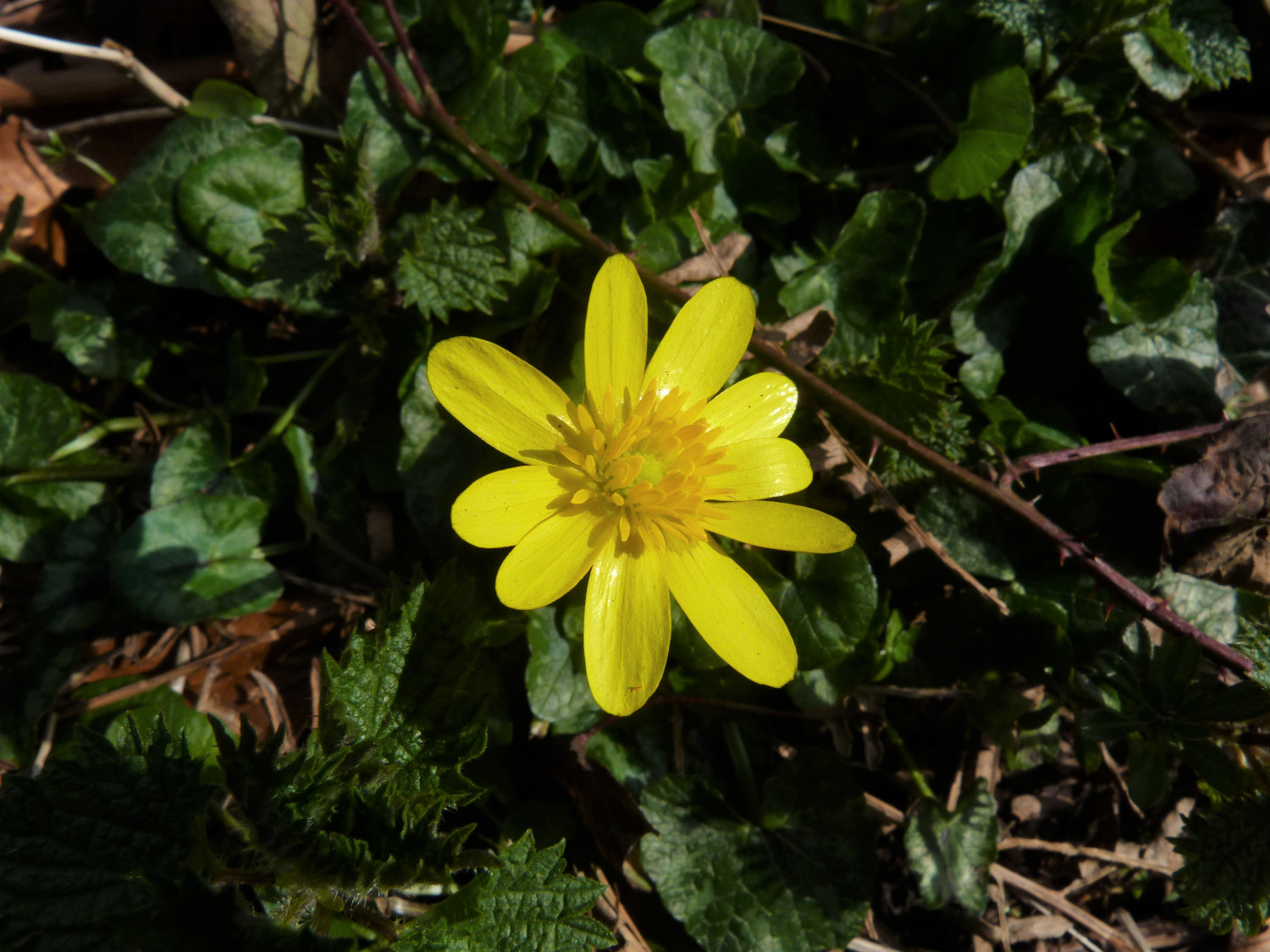
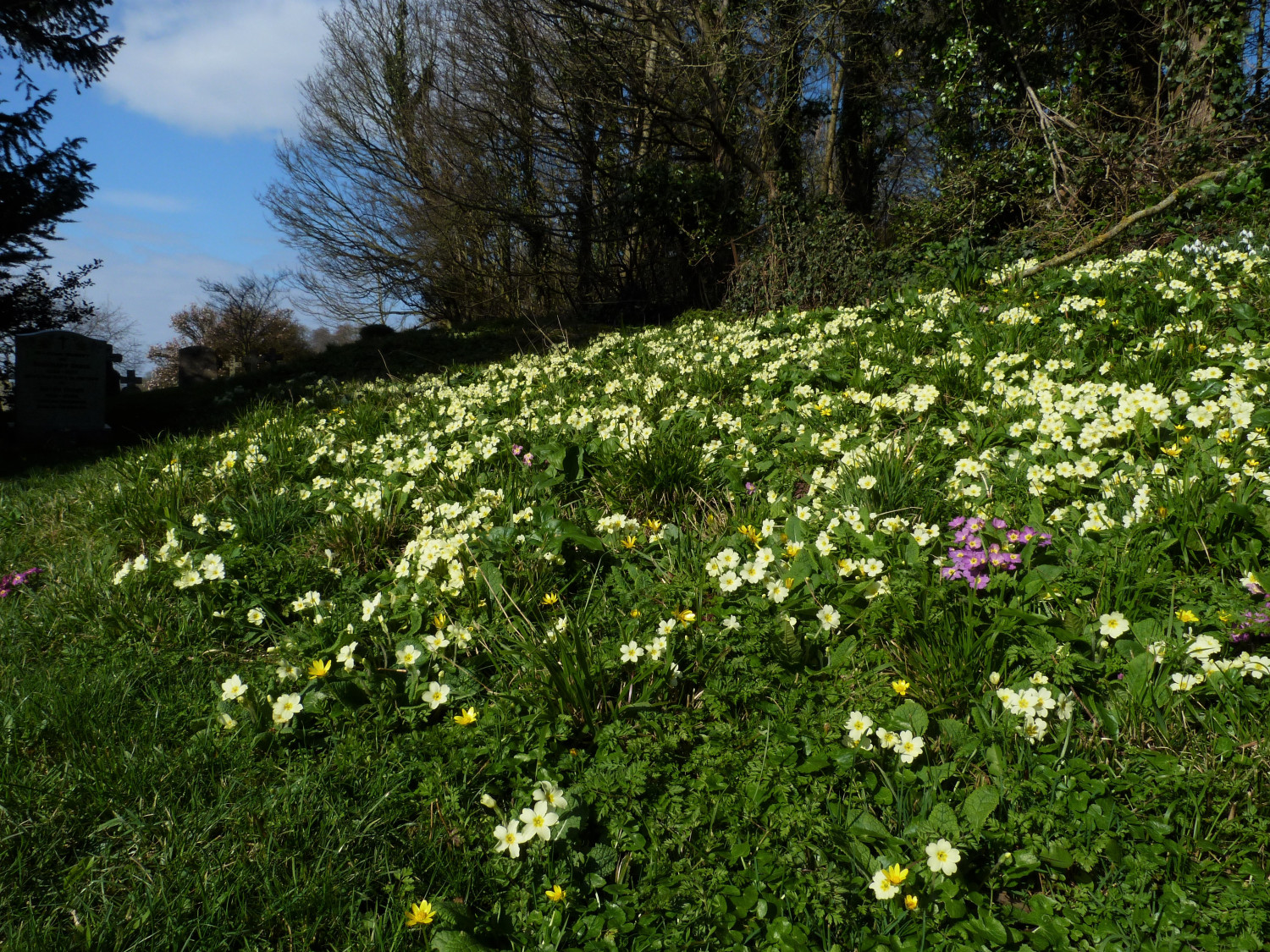
Winter is a barren time for flowers but there is a patch of richly scented winter heliotrope near the lychgate by the shed that flowers in January. The earliest significant spectacle is a bank of primroses to the north of the chancel that flower in late February. These are accompanied by violets. During March the south bank is covered in celandines and daisies and primroses are prominent in the shade of our beech tree that comes into leaf in April. There are five species of annual speedwell that are present in the early spring. The challenge is to identify them! In the hedgerow the white flowers of blackthorn appear before the leaves.
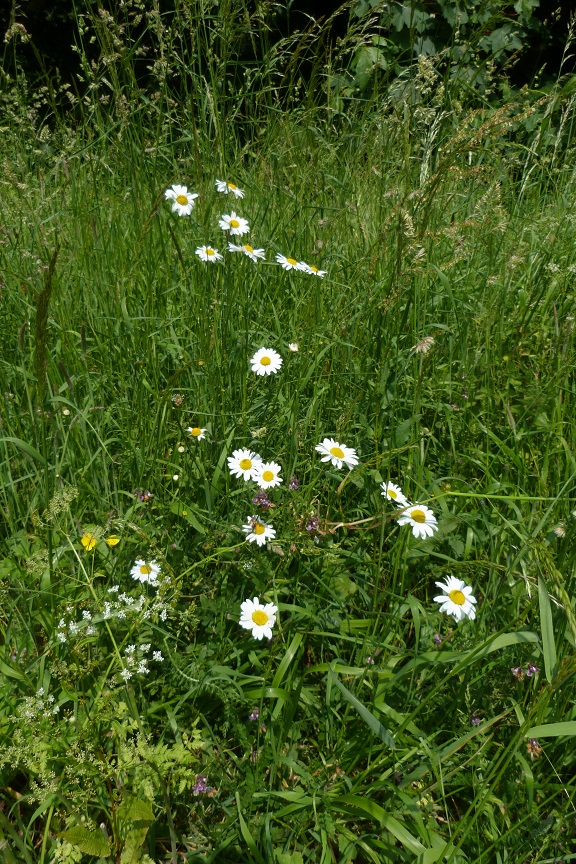
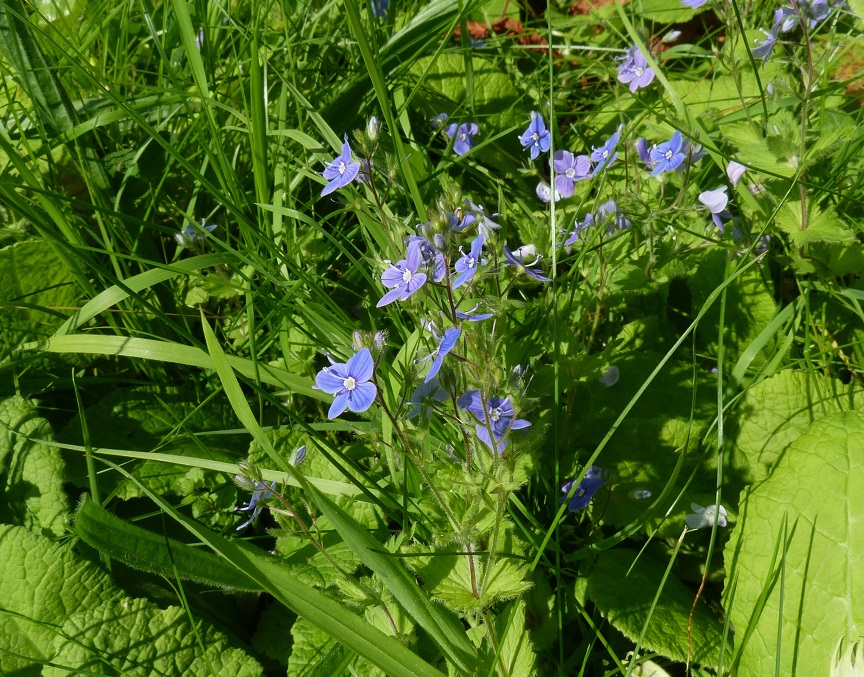
As spring advances it is worth wandering around the gravestones and up to the north bank. Cow parsley blooms in profusion and there are a few cowslips growing around the base of the bank. The striking blue of the perennial germander speedwell is a prominent feature. Three varieties of buttercup appear in the north and south banks (another challenge for identification) and oxeye daisy makes an appearance..

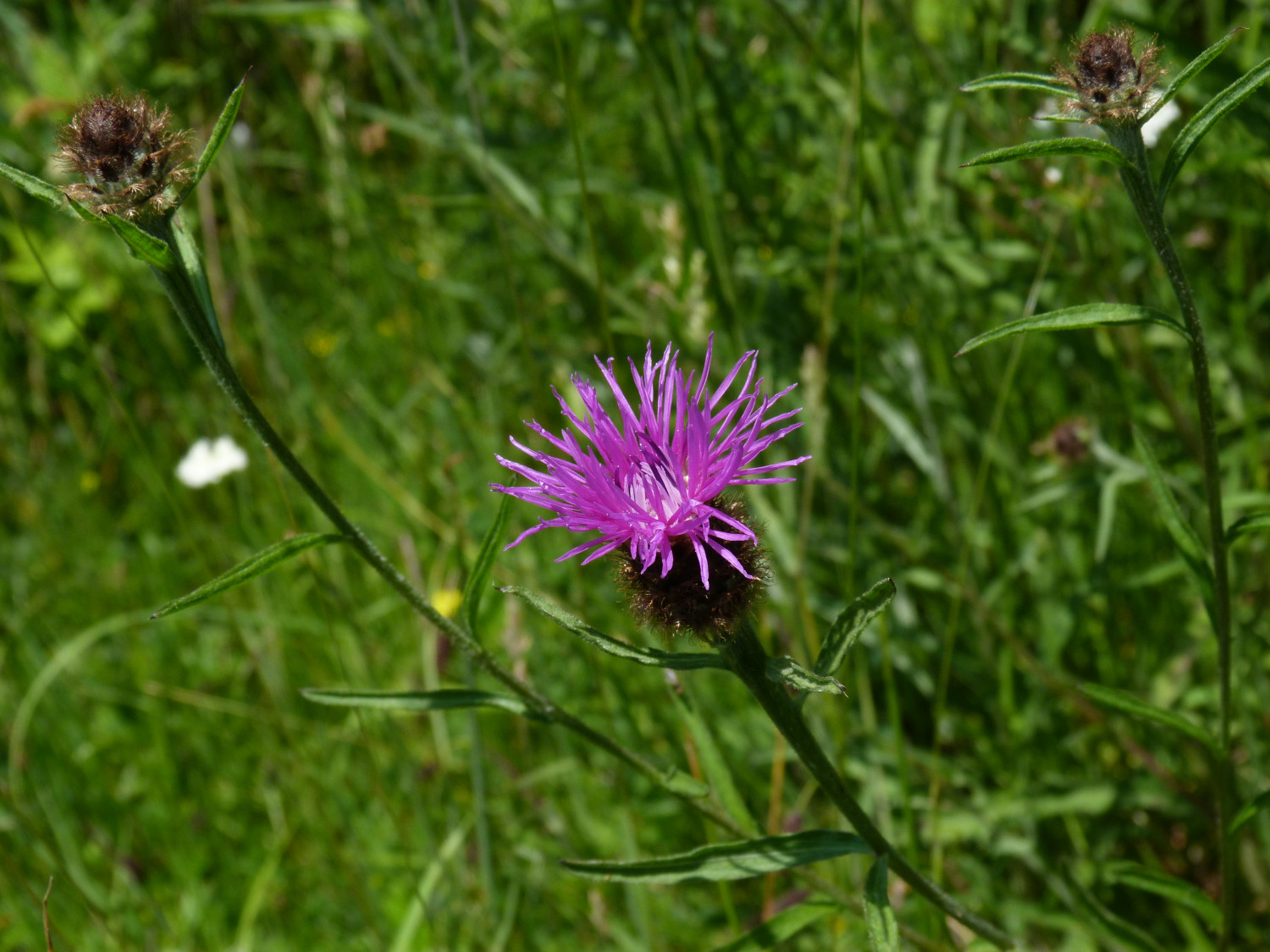
In summer the most striking feature of the south bank are the yellow dandelion like flowers of the cat’s-ears and hawkbits. These flower throughout the summer despite being knocked back by a fortnightly mowing! The north bank has been enriched in one selected area by the introduction of wild flowers in 2017/8, St John’s wort, black knapweed, great willowherb and common fleabane. The insignificant flowers of the stinking iris can also be seen there but grows better in the dry ground under the beech tree. This plant is more prominent in autumn with its rows of bright red fruits.
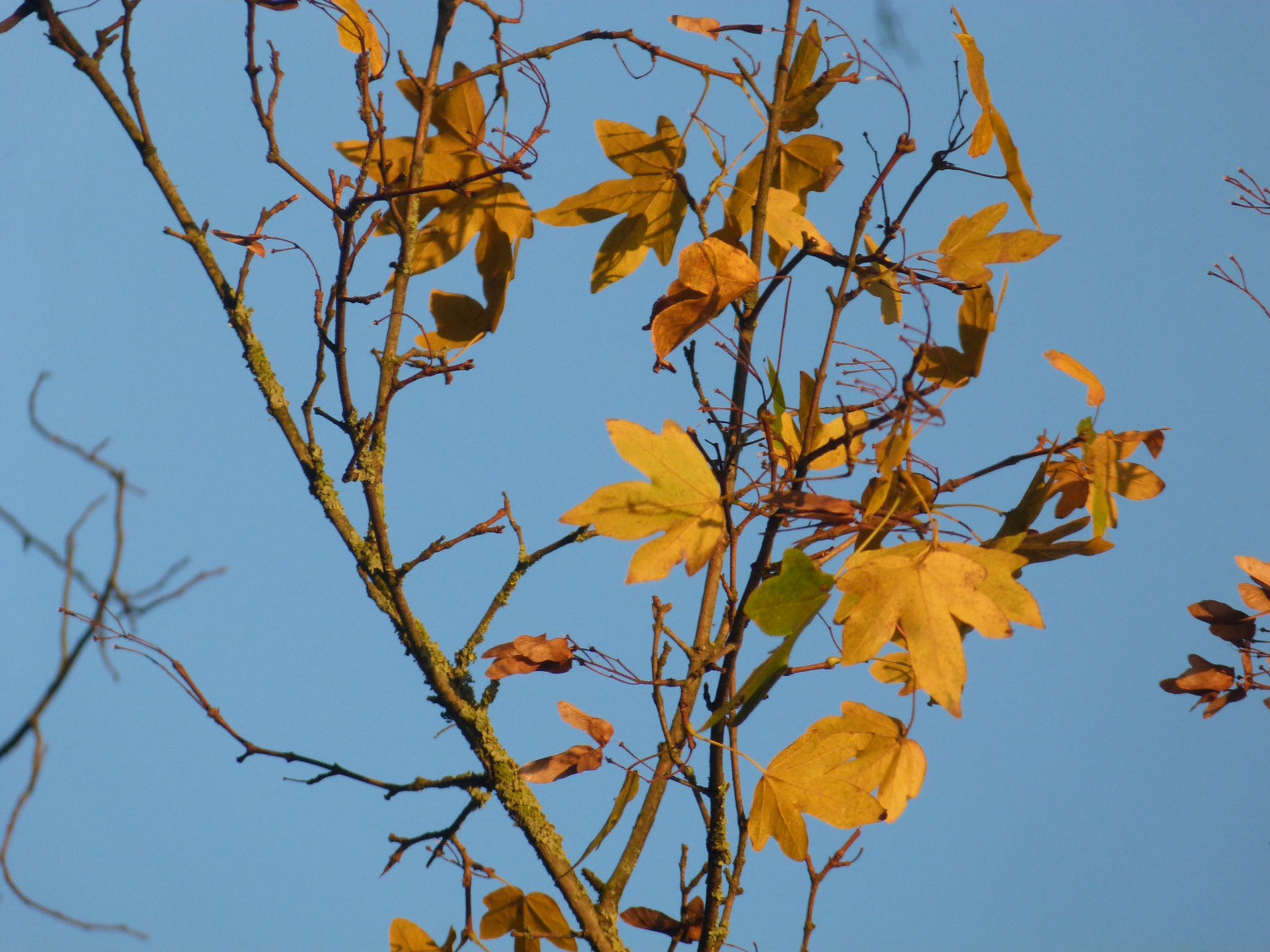
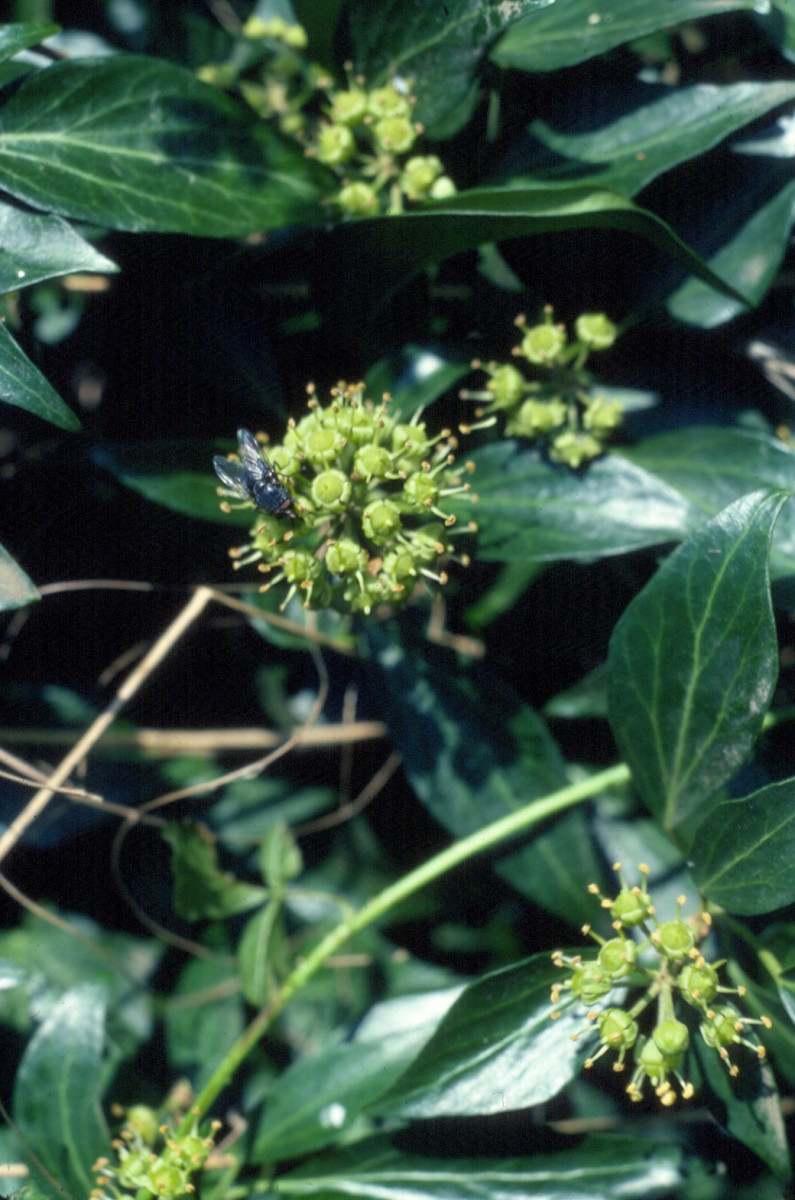
By autumn most plants have finished flowering except for ivy, which provides a valuable nectar source for late flying insects. To compensate for lack of flowers the autumn leaves of beech, oak and field maple provide a colourful backdrop to the churchyard.
For those who are interested a full plant list can be viewed by clicking here. With a good identification guide the churchyard will provide you with significant pleasure in spring and summer.